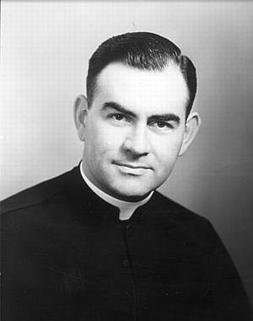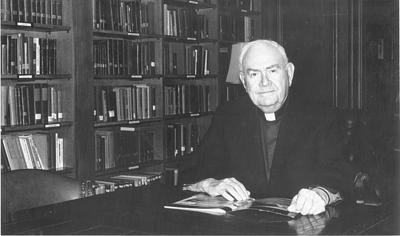
Notre Dame Legends and Lore / by Dorothy V. Corson



|
University of Notre Dame
|
Why the “Fighting Irish”?
Many people wonder (or worry) about Notre Dame and that word, Irish. To us, it doesn't mean race exclusively; nor is it just another nickname. The fact is, it keeps alive the memory of a long, uphill fight for recognition against a spirit that was not always generous, nor even fair-minded. The Irish, as known at Notre Dame, has an authentic history and a meaning deeper even than race.
Notre Dame began athletic relations chiefly with local colleges founded by various denominations. Press reports would refer to the schools as the “Baptists” or the “Methodists,” and the like. For Notre Dame it was the “Catholics,” or the “Irish.” But the players were never all of Irish ancestry; nor were they all Catholics.
The usage was not original, but a continuing custom from earlier Colonial times. The bulk of the first Catholic immigrants were Irish -- so that Catholics and Irish were identical in the public mind. It is sad to recall now, but few of the original states were without laws against them. Advertisements for ‘help wanted’ commonly carried the restriction: “No Catholics. No Irish.” The Puritans were the first to cry: “Stop the Irish!”
When the religious origin of other colleges lost its significance, the emphasis shifted to conventional names, and to their school colors. But history is recorded remembrance in our blessed heritage here at Notre Dame. Fighting Irish! It’s more than a name; more than a people. It is the Faith!
In narrow, little New England, it began as a slur -- a term of opprobrium. But we took it up and made of it a badge of honor -- a symbol of fidelity and courage to everyone who suffers from discrimination; to everyone who has an uphill fight for the elemental decencies, and the basic Christian principles woven into the texture of our nation. Preserving this tradition, and this meaning of Irish at Notre Dame does honor to everyone of us. It explains why Lewinski belongs here; why Alessandrini is the Irish leader; why Schmaltz belongs here; why Bertrand, and Moreau, Van Dyke, and Larson feel at home here as much as do Leahy and O’Brien.
Tomorrow you can take this one lesson from the Irish: they were never so poor in all their wanderings and sufferings that they bartered their Faith for the comforts of this life. They had little to take with them wherever they went; but the Faith was always the most precious of their paltry possessions. Their spirit has made it easier for you to practice your Faith here in America today. May the Fighting Irish always be with us!

My first meeting with Father Carey occurred midway in my research on the Notre Dame Grotto. I had been told by a priest friend at Holy Cross House that he probably knew more about Notre Dame than anyone else since he had lived on campus most of his life. I had a question to ask him about the hand gun used by biologists, Fr. Nieuwland and Prof. Greene, to shoot down the leaf specimens from trees on campus they couldn’t reach. It was a story that made me smile just imagining it, so I couldn’t resist finding out if it really was true. I had heard that the hand gun was still kept in Fr. Nieuwland’s former desk in the Nieuwland Science Hall and that the priest who now worked at the same desk lived at Corby Hall on campus with Fr. Carey.
Fr. Carey visited Holy Cross House on a regular basis to take confessions from the retired and infirm priests living there. On Friday afternoons I would run into him on my regular visits to Holy Cross House to see my priest friends. I have been visiting there since 1971 when Fr. Jan, who hired my father to build the St. Stan’s Grotto, because of failing health, moved there from the Mission House on campus. Upon occasion, I took a Sister friend from St. Mary’s Convent to visit Fr. Jan (Fr. Sigmund Jankowski, C.S.C.) and she always referred to Holy Cross House as the “Vestibule of Heaven.”
At one time, it was the last place priests wanted to go; they would stay instead at Corby Hall in the middle of the campus until there was no other alternative. Now Holy Cross House has been renovated and enlarged with many views of the campus across St. Joseph Lake. The windowscapes are magnificent. And the care and comforts afforded its retirement guests are splendid.
It got to be a habit for Fr. Carey to join Fr. Schidel and me for juice or coffee and cookies in the tastefully appointed dining room in mid afternoon before taking confessions. Each time we saw each other he would ask if I had discovered anything new in my research to share with him. When I was researching Empress Eugenie’s crown and had gotten as far as I could go, I took a photograph of the Empress wearing a crown with me to Holy Cross House just in case Fr. Carey knew anything about it. I could hardly believe it when he told me that he not only had heard about the missing crown but had seen it as well. I wrote about his memory of it in the Empress Eugenie chapter in my manuscript. He also shared his own Grotto stories associated with Corby Hall. He told me about all the engagement rings left in his keeping in the Corby Hall safe (five at one time) for young Notre Dame students who planned to go to the Grotto to propose marriage to their girl friends. Fr. Carey couldn’t even begin to count the number of marriages he had performed, my neighbor, a Notre Dame Alumnus, being one of them.
One day at the archives I was going through a file of Religious Bulletins which were begun by Fr. John F. O’Hara, C.S.C. during his time on campus. They were continued after he left by others, so it was a thick file. One of the items of interest I found that day and recorded in my manuscript was an interesting suggestion made to the students that made me smile when I read it:
Notre Dame Religious Bulletin
October 14, 1941
Another item I ran across the same day also impressed me. It was an essay entitled: “Why The Fighting Irish”? It was dated March 16, 1953. I had never seen anything quite like it and was sure it must have been hidden away all those years just waiting for someone like me to rediscover it. Since it was very Irish, I knew just the person to share it with on my next visit to Holy Cross House, the very Irish Fr. Carey. He responded immediately to the twinkle in my eyes as I handed it to him expecting it to be another of my interesting discoveries about Notre Dame’s early history. I told him how impressed I was with it, but that unfortunately, there was no indication of who wrote it. Anticipating a positive response from him, I was watching for his reaction and commented, “Now if we just knew who wrote it.” A grin crept across Fr. Carey’s face as he read it and there was a light in his smiling Irish eyes. As he handed it back to me he said: “Well, if you’ve got a pen, I’ll autograph it for you.” Fr. Schidel had already read it before Fr. Carey joined us and we both looked at Fr. Carey in wide-eyed wonder.
What a mystifying coincidence that I would be wishing to know the author and it would turn out to be Fr. Carey himself. I still have never seen a better explanation of “Why the Fighting Irish?” Fr. Carey said he’d almost forgotten about it and he was pleased to see it again and learn that I had run across it in such a happenstance way. Now at the top of the essay is his autograph to me: “For Dorothy, Charles M. Carey.”
Fr. Carey’s health began to decline just before the Holy Cross House residents were to be relocated at an off-campus facility for the lengthy renovation of their retirement home. Fr. Carey was concerned about the move because he didn’t want to die away from Notre Dame the place he called home almost his entire life. Blessedly, at age ninety, just a few weeks before they were moved, Fr. Carey passed away at his beloved Notre Dame. He was not alive when my manuscript went online on Lourdes Day 2000, but his encouragement while I was writing it and his contributions to my research will be found in its pages. He was a delightful man, admired and loved on campus by everyone who knew him.